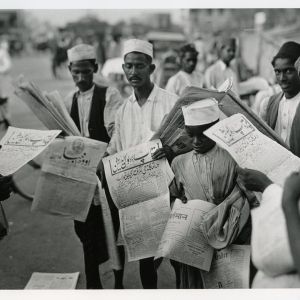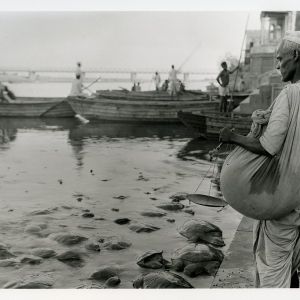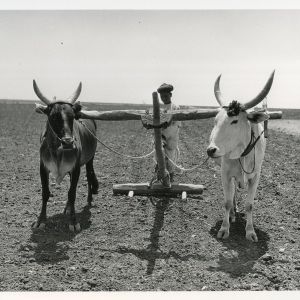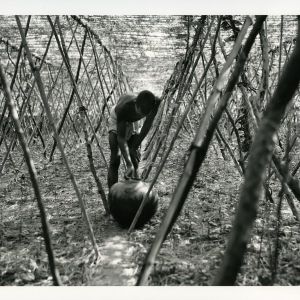HELENEUM – LUGANO
In 1930, Walter Bosshard was sent by the Dephot Agency to India to document the general unrest against the British presence and the nascent independence movement that was asserting itself before global public opinion. It was precisely on this occasion that Bosshard met Gandhi and photographed him in his everyday life with that very simple, yet authoritative hieratic style that has since become one of the stereotypes of the Mahatma’s public iconography. In that famous reportage, which established him as one of the greatest photographers of the time, Bosshard portrays the turmoil of a world at the dawn of an epochal change, suspended between the legacy of a past still manifest in the architecture and forms of culture and a civil commitment that transforms the great masses into the narrating subject of the immense luminous spaces of the Indian sub-continent. Through Bosshard’s eyes, reality is almost given back to us live, containing the space for interpretation and enhancing the value of witnessing the other. The 38 works in the exhibition have all been reproduced from Bosshard’s negatives held by the Fotostiftung Schweiz in Winterthur. The titles of the works translate the German titles given by the author in his publications and in the captions of the short handwritten texts on the negatives” paper pockets. The exhibition itinerary, reflected in the sequence of images in the catalogue, is intended to suggest to the visitor a series of reading levels that correspond to the unravelling of Bosshard’s visual discoveries, as we can deduce them from the analysis of the more than two thousand surviving shots and the narrative plot of his manuscript Indien Kämpft.
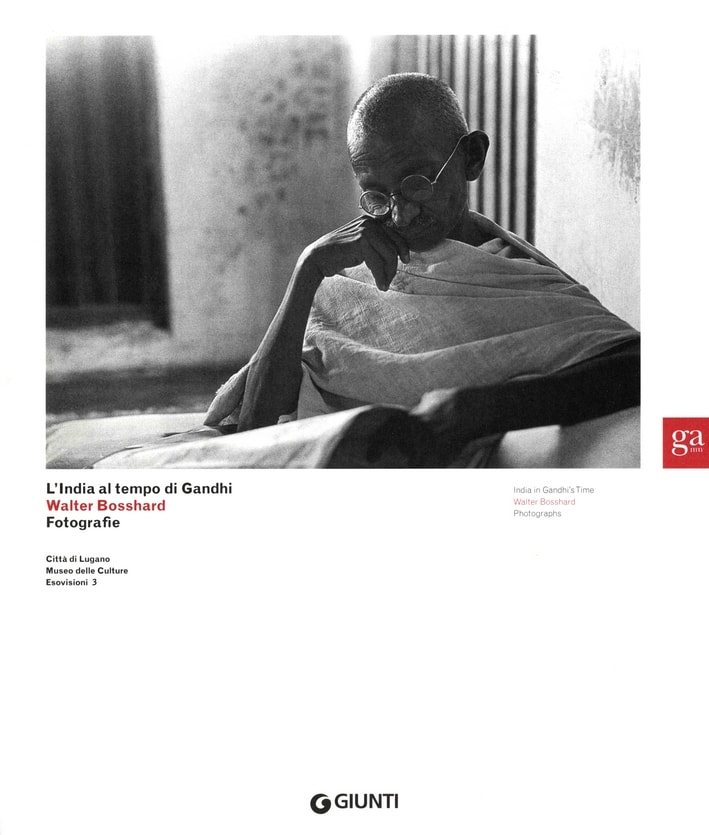
Walter Bosshard was born on 8 November 1892 in Zurich. In 1912 he enrolled at the University of Zurich where he attended courses in Pedagogy and Art History. He found work as a commercial agent in the Far East. His interests were diverse and allowed him to travel extensively. His passion for photography, which stemmed from his desire to visually document his travels, led him to perfect his technical knowledge in the mid-1920s. An important opportunity, which enabled him to perfect the characteristics of his vision and the techniques necessary for developing and printing negatives in the field, came to Bosshard through a fortunate meeting in Peshawar, Afghanistan, with the German geographer Emil Trinkler, who was at that time preparing an expedition to the Tibetan Plateau and the Tarim Basin. Bosshard was able to join the group as the logistics manager of the caravan and as the photographer in charge of documenting the work. At the end of the journey, Bosshard stayed for four months in Kashgar, an old caravanserai along the Silk Road, and put in order the large quantity of photographs he had collected. From the beginning of the 1930s, he became one of the most sought-after photojournalists by the leading German-language newspapers, with some of which, and in particular with the “Neue Zürcher Zeitung”, he would forge a relationship that would last until the end of his career. During his life as a photographer-reporter, he made countless journeys, visiting various countries including China, Siam, Cambodia, Laos, Vietnam, Egypt and documenting the Sino-Japanese war in Manchuria and Shanghai. Among his most important reportages is the one on the voyage of the famous Zeppelin LZ127 airship that successfully attempted the Arctic flight from 24 to 31 July 1931. He worked for various photographic agencies and specialised magazines, including the “Black Star”, founded in New York, “Life”, “Atlantis”, “Vu”, “Berliner Illustrierte Zeitung”, “Schweizer Illustrierte Zeitung”, “Neue Zürcher Zeitung” and “National Geographic”. The last fifteen years of his life were divided between Switzerland and Spain. Between 1959 and 1962, he collected his memories and wrote his last two books. Walter Bosshard died on 18 November 1975 in Torremolinos, some ten days after his 83rd birthday.
Reiterazioni
• 14 December 2008 – 3 May 2009, Villa Mussolini, Riccione
• 13 October 2013 – 12 January 2014, Palazzo delle Paure, Lecco
«Esovisioni» is a cycle dedicated to the peculiarities and paths of the vision of cultures through the photographic lens. The working hypothesis is that the photographer, taking the exhibition’s exotic image as a pretext has, consciously or unconsciously, returned his own inner vision, enriching the collective imagination with artful images and stereotypes of different cultural realities.


